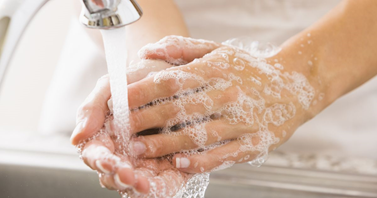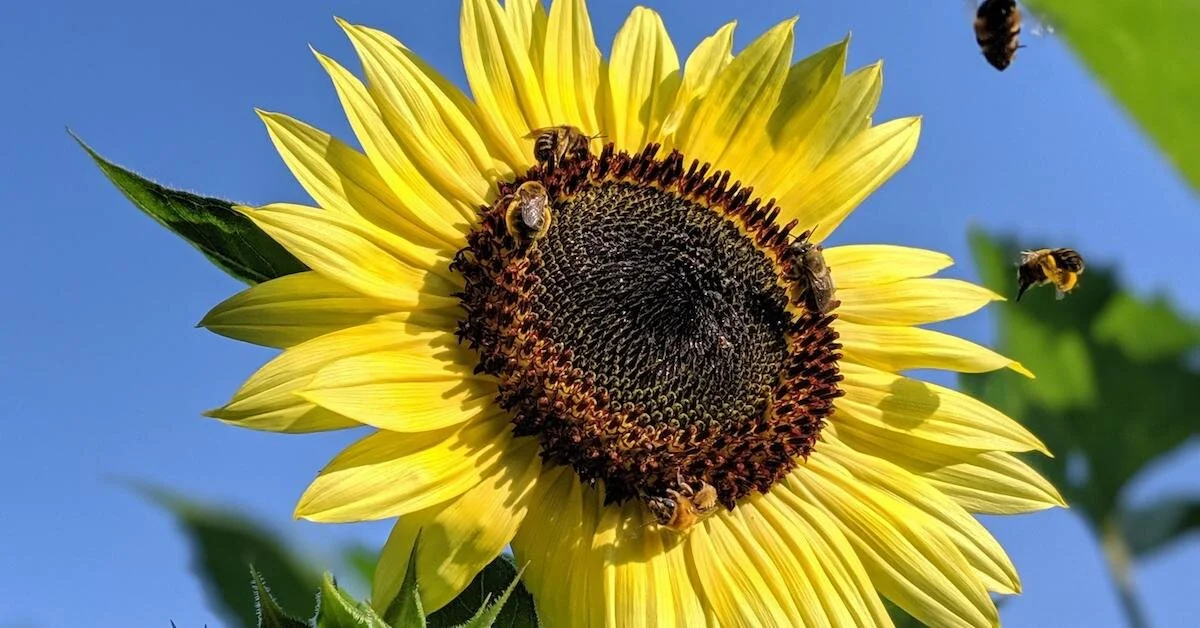What You Can Do to Protect Yourself from Pesticides in the Floral Industry
According to investigative journalist Amy Stewart, cut flower sales exceed $40 billion a year, and the famous Dutch Aalsmeer market handles about 19 million flowers per day. Nearly half of the world’s flowers travel through these large Dutch auction houses. And 78% of all cut flowers that are sold in the United States are imported from Latin and South America [1].
With the need to grow, transport, and ship floral product worldwide, chemicals are used to preserve the investment made in growing these delicate botanicals. However, although we’re aware that pesticides are used in the floral industry, it means there is risk of chemical exposure for floral pros. What can do you do protect yourself in your journey with flowers?
The Problem of Pesticide Use in Cut Flowers
As our industry grows, many wholesalers are working with domestic and foreign growers to import flowers and make them available year-round. These cut flowers have to pass stringent United States Customs inspections before entry to prevent foreign fungal and insect infestations.
There is absolutely no limit to the amount of pesticides sprayed on cut flowers imported into the U.S. because they are not considered a consumable. Foreign growers have invested too much time and money to jeopardize their product, so it is sprayed heavily with numerous fungicides, herbicides, and insecticides throughout their growing season and prior to shipment. Therefore, pesticide residues remain on the stems, petals, and foliage of the flower bunches we work with.
Images above display pesticide residue on Bupleurum rotundifolium
The consumer or customer is not likely to be affected by this because they receive pre-designed arrangements. However, the floral designers can experience side effects. When you spend several hours per day (and several days a week) processing and designing without gloves, your skin is absorbing all of these toxic chemicals.
As far back as 1979, scientific literature reports of ten cases of possible organophosphate pesticide poisoning in the American Journal of Public Health titled “Cut Flower: A Potential Pesticide Hazard.” This paper suggests setting safety standards for residue levels on cut flowers [2].
Testing the Flowers
In 2016, a Belgian team of scientists led by Dr. Khaoula Toumi sought to find out if pesticide residues could be detected on three cut flower species: roses, gerberas, and chrysanthemums sampled from different florists in seven of the largest cities in Belgium. They were able to determine over 107 different active substances that were either herbicides, fungicides, or insecticides [3].
Summary table of active substances found on samples tested:
Biological Activity: Roses - Gerbera - Chrysanthemums
Fungicides: 46 - 15 - 12
Herbicides: 1 - N/A - N/A
Insecticides: 47 - 14 - 19
Growth regulators: 3 - 1 - N/A
Roses were determined to be the most contaminated out of the three cut flowers [3].
Table 8 illustrates the different hazard categories that all of the active substances fall under: acute toxicity, carcinogenicity, germ cell mutagenicity, reproductive toxicity, sensitization of respiratory tract or skin, skin corrosion/irritation, and specific acute/chronic organ toxicity [3].
Most active substances that were tested reached concentrations that are approximately 1000 times above the maximum limit set for food. Certain active substances tested are highly toxic in an acute setting and can act directly on the nervous system [3].
In this paper, the team surveyed the habits of Belgian florists and determined that 60% of the florists worked between 6–7 hours per day, 96% did not wear special clothing, 88% ate, drank, and 12% smoked while working. Not to mention, 60% of surveyed florists did not receive any information on pesticide residue [3].
Testing the Gloves Worn by Florists
In 2017, this same team went on to check whether these residues could be found on cotton gloves worn by volunteer florists. They proved that all glove samples submitted for analysis were contaminated with high levels of fungicides [4]. They went on to test the concentrations of these fungicides, and they determined the average and maximum concentrations. The team also compiled the fungicides as to what hazard category they belonged to. This study proves that pesticide residues are being transferred from cut flowers to the florist’s hands [4].
Testing the Urine of Florists
An additional study was published in 2019 comparing the urine samples of 42 Belgian volunteer florists versus a group of “individuals not occupationally exposed to pesticides” during the “three most important commercial periods” [5]. The team discovered a total of 70 residues, and the average individual florist’s urine sample contained about eight pesticide residues and metabolites. These results were significant compared to the control group, who were not exposed to pesticides. Taken together, this information proves that these pesticides are entering the bloodstream and circulatory system of the florists and pose a health risk.
What can be done? safety measures to take when working with cut flowers
Go local! If you know where your flowers are grown, then you can ask your flower farmer if you need to take any precautions!
Wear gloves! This is the simplest and most effective way to reduce pesticide exposure. Nitrile gloves are form-fitting and will NOT interfere with designing.
Hand-washing is also critical to prevent these pesticides from getting into the bloodstream.
Do NOT eat, drink, smoke, or touch your face while processing or designing to prevent accidental ingestion of pesticides, . If you need to take a break, make sure to wash your hands!
Every industry requires safety measures, and the floral industry is no different. By adopting simple housekeeping rules, your exposure can be significantly reduced. Pledge to protect yourself from these toxic chemicals starting today.
References
Stewart, A. Flower Confidential Chapel Hill, North Carolina: Algonquin Books of Chapel Hill, 2007 and 2008.
Morse D, Baker E, Landrigan P. “Cut Flowers: A Potential Pesticide Hazard.” Am. J. Public Health 1979; 69: 53-56.
Toumi K, Vleminckx C, van Loco J, Schiffers B. “Pesticide Residues on Three Cut Flower Species and Potential Exposure of Florists in Belgium.” International Journal of Environmental Research and Public Health 2016; 13, 943.
Toumi K, Vleminckx C, van Loco J, Schiffers B. “Risk Assessment of Florists Exposed to Pesticide Residues Through Handling of Flowers and Preparing Bouquets.” International Journal of Environmental Research and Public Health 2017; 14, 526.
Toumi K, Joly L, Vleminckx C, Schiffers B. “Biological Monitoring of Exposure to Pesticide Residues Among Belgian Florists.” Human and Ecological Risk Assessment: An International Journal. 1–18.











